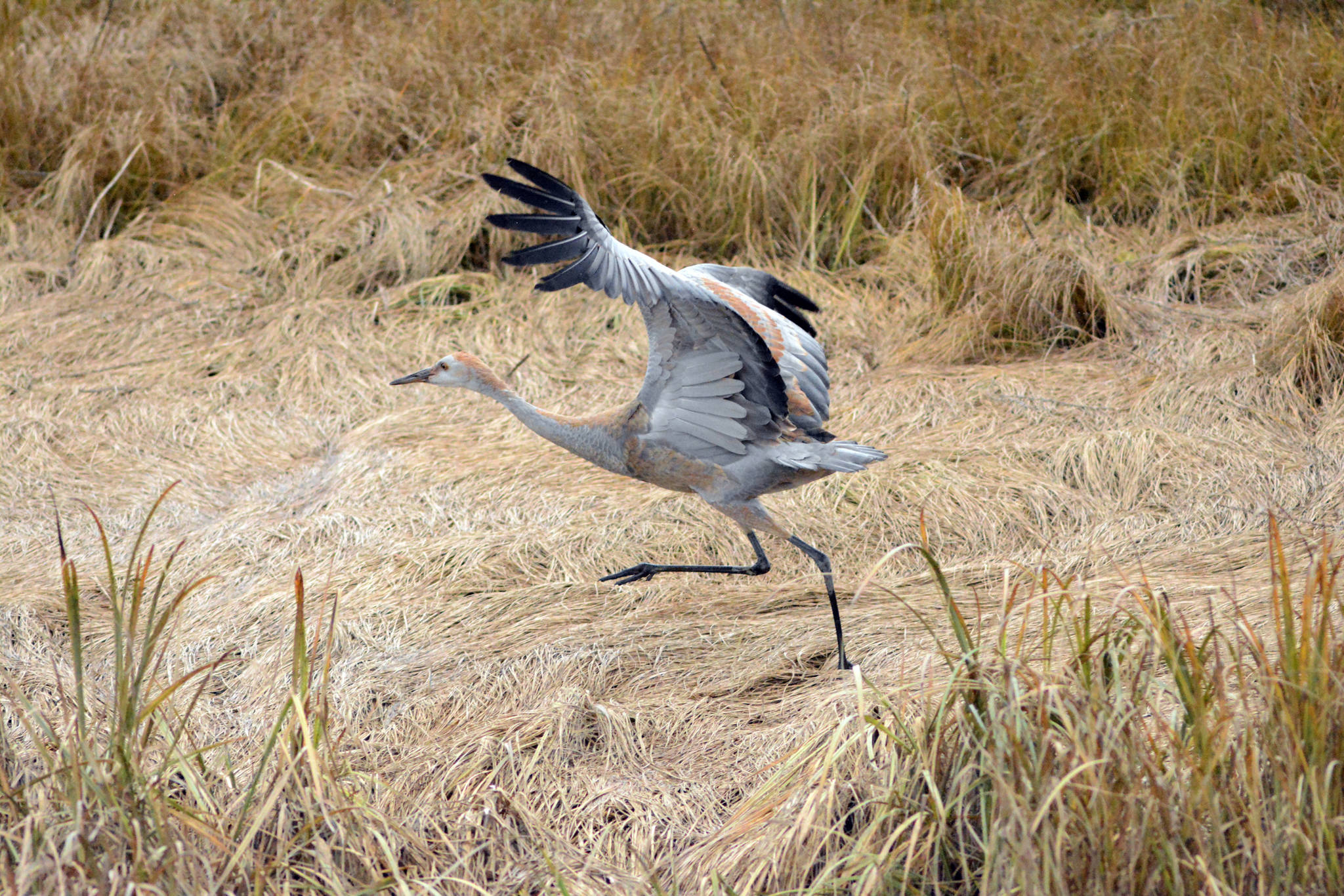Volunteers with Kachemak Crane Watch on Monday morning rescued an injured sandhill crane colt from Beluga Slough. After being taken to the Bird Treatment and Learning Center in Anchorage, the colt had to be euthanized on Tuesday because of a broken wing that couldn’t be treated.
The young crane and its parents had been staying in the slough past the migration of most of the Kachemak Bay sandhill crane flock last month. The parents left on Saturday, Oct. 6, and volunteers were able to capture the young crane on Monday. The crane was taken to Bird TLC, a nonprofit that treats and rehabilitates injured birds and educates people about wild birds and their habitat.
In a phone interview on Monday, Crane Watch co-founder Nina Faust said the colt might have a broken or dislocated shoulder.
“We’re keeping our fingers crossed and hoping they can do something for it,” she said.
That turned out not to be the case after Bird TLC staff examined the colt.
“It was an old compound fracture. The bone protruded through the skin,” Amy Kilshaw, Bird TLC rehabilitation coordinator, said on Wednesday.
Because the colt couldn’t extend its wing, it would not be able to fly and couldn’t be eventually released, she said. The colt was part of a crane family that breeds and nests at the southern end of Beluga Slough near the Beluga Lake Lodge. Faust said three families traditionally nest in the slough, with one pair by Beluga Lake Lodge, one by the boardwalk and one by Public Works. Former Homer City Council member David Lewis said he had seen a colt crash into a guardrail late in September. Faust said the colt kept crashing into things while learning to fly. It was the third injured colt reported to Kachemak Crane Watch this breeding season. Two other colts had to be euthanized because of the severity of their injuries, including one colt mauled by loose dogs.
Though they migrated late, the parents of the colt should be OK, Faust said. She got a recent report of sandhill cranes gathering in the Matanuska-Susitna River valley, so the Homer cranes will probably connect with other stragglers. Cranes gather together waiting for optimal flying conditions of a northwest tail wind.
“It breaks my heart how nature takes over and they have to leave for survival,” Kershaw said of the parent cranes that left.
Faust and the late Edgar Bailey founded Kachemak Crane Watch to monitor and advocate for sandhill cranes. For more information, visit www.cranewatch.org.
For more information on Bird TLC, visit its website at birdtlc.org.
Reach Michael Armstrong at marmstrong@homernews.com.


